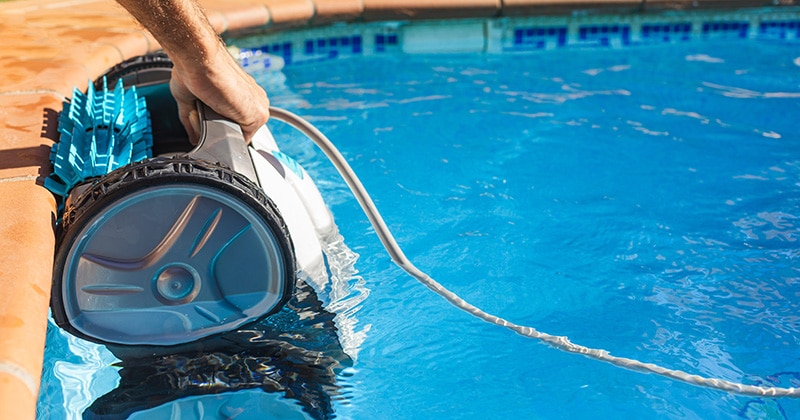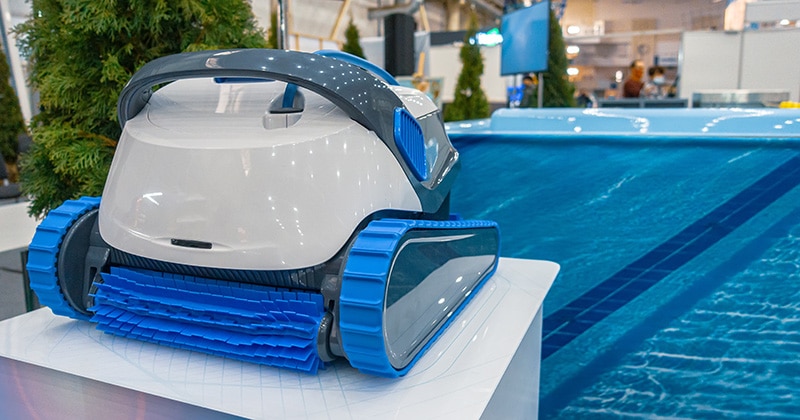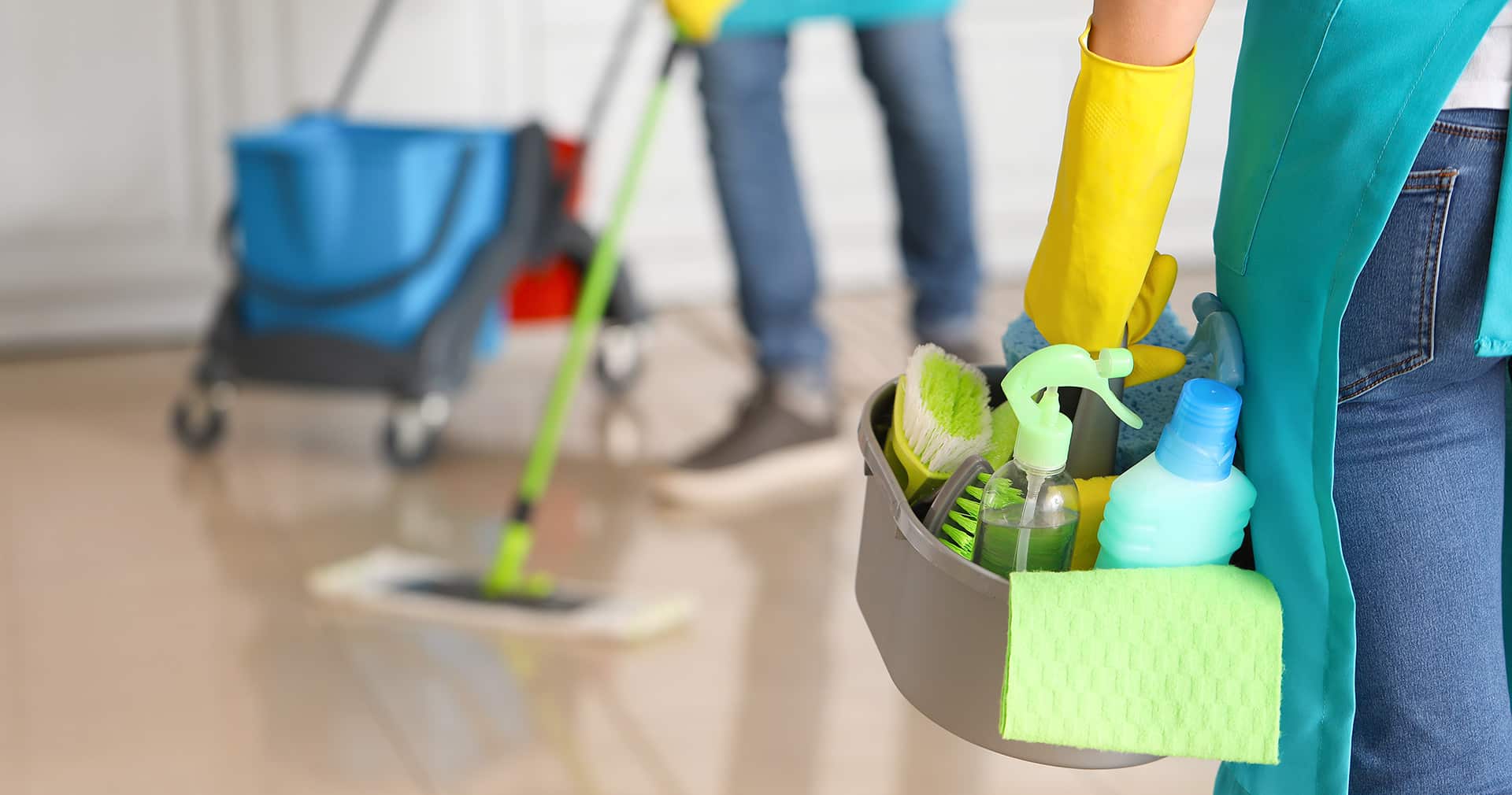The 7 Top Commercial Pool Vacuums
A commercial pool vacuum ensures your workers have the best tool for the job. Explore the best options on the market to help you make the right choice for your environment.

Staff Contributor
Ensuring you equip workers with the right pool cleaning tools leads to greater efficiency and better results for your business. An essential part of this is a commercial pool vacuum. These machines need to be robust, high-quality, and designed for heavy-duty usage.
If you’re weighing options to make a purchase for your business, you’ll want to dive into this guide on the best commercial-grade pool vacuums. Learn about the considerations to have in mind when searching and what features to add to your criteria.
Then, explore the top vacuums on the market.
Why Finding the Right Commercial Pool Vacuum Matters
Equipment and tools form the core of your operations in the pool cleaning business. Keeping pools clean can be challenging work. A windy day can quickly make a pool messy and dirty from leaves, dirt, and sand. A full day of swimming can also lead to a buildup of debris.
When your workers service pools, they never know what’s waiting for them. By arming them with powerful equipment like a commercial pool vacuum, they can manage any job.
However, the vacuum you provide must be one designed for professional use. Otherwise, it has a higher chance of not performing well or simply failing after a short time.
Choosing the right commercial pool vacuum matters because you can:
- Improve workers’ productivity on the job so they can service more pools in one day.
- Support the efficient cleaning of any pool, regardless of its state.
- Be confident the machine will last for years, so you’re not constantly replacing it.
A pool vacuum that is right for your pool cleaning company will also depend on the functionality. There are many choices on the market, each with nuances regarding how it works.
Here are some examples of automatic pool-cleaning vacuum types:
Robotic Pool Vacuums
These cleaners use electrical power and bypass a pool’s filtration equipment. Computer navigation enables these vacuums to reach all pool areas. They are also programmable, so you can adjust them to clean at a specific time or section of the pool.
Regarding filtration, robotic cleaners have reusable cartridges or baskets to remove when needed.
Suction-Side Pool Vacuums
This vacuum gets its power from the pool’s existing pump motor. It connects to the skimmer or a dedicated suction to pull up dirt debris in the pool. The force of the suction causes it to move around and clean at random.
A suction-side pool vacuum may have wheels, a rubber disc, or bristles. Some pools have specific ports for this type of cleaner, or it can attach to the skimmer. The dirt and particles it collects are pushed into the pool’s filter basket or skimmer. It’s crucial to watch this, as it can get clogged.
Pressure-Side Pool Vacuums
This type of vacuum also uses the pump motor for power. It connects to the water return jet. The pressure pushes the vacuum around the pool. It runs in step with the pump motor, shutting down when it does. Its best use case is for removing big stuff.
Pressure-side machines have reusable collection bags. Once full, it will need emptying before being used again.
Portable Upright Pool Vacuums
Another class of pool vacuums is portable and upright. They may have a continuous electricity supply to last all day. Some look like vacuums, using filter bags to collect dirt and debris.
Within each pool vacuum type, different considerations will lead you to the category that will work well for your business.

Key Considerations for Commercial Pool Vacuums
Before you investigate features for professional pool vacuums, you should review vital considerations that will influence your decision.
Power and Capacity
The power source for a pool vacuum can be the pressure from a hose or by plugging it into the pool motor. Another option is cordless, which uses a rechargeable battery. In general, corded pool vacuums can manage much larger debris.
Ultimately, power really is about how well the vacuum suctions. Its electric motor drives its performance.
Capacity refers to the average run time for battery-powered vacuums. It can also refer to the size of the waste collection basket. The smaller the basket, the more often you’ll need to stop and empty it before continuing to vacuum.
Low suction and power can impact your productivity, causing your dispatching schedule to be off track. Thus, this consideration has much to do with your ability to keep schedules accurate and customers happy.
Build Quality and Durability
A durable commercial-grade pool vacuum is essential for professional use. It will get much more work than one that only services one pool. In terms of durability, much of this had to do with the quality of its parts and exterior.
The vacuum’s build may also include a cart if it’s an upright option. The carts have wheels for quick unloading.
Some material options include plastic, vinyl, aluminum, and PVC.
Maintenance and Serviceability
Any machine needs regular maintenance. How easy it is to service them should influence your purchasing decisions. When reviewing options, consider these maintenance needs:
- Checking scrubbers
- Debris basket cleaning, if applicable
- Filter and net cleaning, if applicable
- Component inspection to identify any wear, cracks, or other damage
- Draining hoses after use
In addition to regular maintenance, you should look for signs that it needs a more major service. Indicators of this are loss of suction, reduced cleaning performance, and broken wheels or brushes.
Mobility and Transportability
The pool vacuums your technicians use will need to be portable from job to job. These machines vary in weight but are typically 20 to 30 lb. If workers need to haul these longer distances, weight could become a factor in productivity.
Another size consideration is the cargo space needed to transport the vacuums. Review the available room in worker trucks and vehicles to ensure it will fit. You may need a transport rack to make transporting the vacuum less hassle.
Pool Types and Sizes
Different vacuums work better with specific pool types. All are compatible with various in-ground pool shapes and sizes. The surface material, however, can be a determining factor. Vinyl-lined pools tend to bubble or tear. If you work on these pool types, select a vacuum rated for vinyl.
Pool size can also impact decision-making. Some vacuums, whether corded or battery-powered, have limitations. The machine’s specifications will inform you of these. A rule of thumb is to have a hose or cable longer than the pool so its movement is more seamless.
The bottom line is that the larger the pool, the more flexibility you need in its capabilities.
Cost and Value
The price of a commercial pool cleaner will always be a consideration. You need a durable product with a long life, but that will come at a higher price point.
It’s best to consider its value. How often will you have to replace it? How expensive are the parts? Will other maintenance requirements create more costs?
Answering these questions will help you better understand total costs. A more expensive option could last years longer than a cheaper one. These comparisons relay the value for the price.
Essential Features to Seek in Commercial Pool Vacuums
From considerations, you’ll now want to shift your evaluation to features. Commercial pool vacuums often have similar functionality, but there are variances among the four main types: robotic, suction-side, pressure-side, and upright portable models.
Think about features that will differentiate your business’ services and could bring leads to your company.
Here are features to put on your criteria list:
Filtration System
Filtration systems are crucial to a vacuum’s performance and long-term viability.
Different filtration systems are used in the four pool vacuum types. A robotic machine uses cartridges or baskets.
The other versions use bags, which can be lockable. They attach in a way that ensures they don’t fall off. Most of these are reusable; they need proper cleaning and maintenance.
Smart Navigation
The vacuum’s movement around the pool while cleaning can be either smart or random. Robotic pool vacuums employ smart navigation. Their computer points to pool areas with precision. You can also program them to hit specific areas.
Suction-side and pressure-side attachments attach to hoses or skimmers and float around with no clear path to navigate. As a result, it usually takes longer to complete a clean cycle.
With an upright portable vacuum, you manually vacuum, so the operator controls where it goes.
Suction Power
Suction power derives from the vacuum’s motor. The metric for this is either gallons per hour (GPH) or gallons per minute (GPM). The greater the gallons per minute, the more powerful it is.
More suction will require a larger motor, which may make the vacuum less portable. Thus, greater suction isn’t always the right choice. It depends more on the type of debris it needs to handle. Acorns and twigs are much harder to suck up than dirt and sand.
Ease of Use
A vacuum that’s easy to operate will usually be more efficient and yield greater productivity. What makes a cleaner easy to use? The answers to these questions will help you grade its accessibility:
- How long does it take to set up, and how complex is it?
- Does the vacuum require manual operation? If so, how taxing is it for the technician?
- Is removing bags, cartridges, or baskets time-consuming?
- How much effort is necessary to get it to start and remove from the pool?

The Best 7 Commercial Pool Vacuums Recommended for Pool Professionals
In rating the best commercial pool vacuums, we considered many criteria. Those influencing the decisions include brand reputation, value, reviews, performance, portability, maintenance needs, and usability.
1. Dolphin Wave 100 by Maytronics
The Dolphin Wave 100 makes the list with its waterline scrubbing prowess and ability to handle the largest pools. It’s a robotic pool vacuum.
Features
- Cleans pools up to 88 ft
- Filter: Bag, bottom load
- Cycle selector
- Remote steering
- Caddy included
- Two brushes
- Suction: 4,500 GPH
Benefits
- Its ability to climb walls and scrub them removes waterline buildup.
- The filtration system picks up delicate and ultra-fine dirt.
- It’s a plug-and-play machine—plug it in and drop it into the pool.
Cons
- The vacuum doesn’t have a weekly timer or automation mode.
- Some users said it gets stuck on drains.
- It’s costly, retailing for $4,000.
2. VacDaddy® Powerful Portable Pool Vacuum 2.0
The VacDaddy 2.0 is a truly unique pool vacuum. It’s upright and portable for easy operation.
Features
- Handheld
- Plug-in 24 V DC motor
- Bag filter
- Dimmable power source
- Suction: 60+ GPM
Benefits
- There’s no assembly needed to start using it.
- Its design makes it maneuverable to reach any area of a pool.
- It mounts on a standard pole and vacuum head, likely compatible with other tools.
Cons
- It requires manual work to vacuum.
- Some users noted that the hose comes off the head too often.
- It doesn’t perform too well with large debris removal.
3. RIPTIDE SL Pool Vacuum
The RIPTIDE SL is a cart-attached pool vacuum. It can be powered by a plug or a 35-amp-hour battery box.
Features
- Multiple debris collection bag options
- High torque motor using rare earth magnets
- Locking bag ring
- Ceramic wheel bearings
Benefits
- The locking bag ring guarantees the bag won’t blow off during use.
- It has a 10-year warranty on its shell.
- Stainless steel end plates cover the vacuum head for greater durability.
Cons
- The battery box and bags are not included and cost extra.
- It has a premium cost, starting at $1,800.
4. Blue Helix One™
The Blue Helix One is another robotic option that’s programmable and controllable via a smartphone app.
Features
- Focus Mode™ for targeted cleaning
- Programmable with app
- High-speed Quad Brushes
- Dual oversized filters
- Suction: 4,200 GPH
Benefits
- With its powerful brushes, this vacuum boasts superior cleaning for floors, waterlines, and walls.
- Dumping and rinsing filters is quick and easy.
- The Focus Mode™ setting helps you target the dirtiest areas.
Cons
- There’s no manual control option.
- It doesn’t have an anti-tangle swivel.
5. Polaris 3900 Sport Pool Cleaner
The Polaris 3900 Sport Pool Cleaner is a pressure-side cleaner from a leading brand.
Features
- Includes 31 ft of feed hose
- 5-liter dual chamber superbag
- All-wheel PosiDrive with a stainless-steel chain
- Suction: 40 GPM
Benefits
- It has triple venturi jets and all-wheel drive to deliver elite cleaning power.
- The cleaner has an extra-large 2.5-inch inlet to pick up large debris.
Cons
- Customers complain that it gets stuck too often in certain areas.
- The bag is more difficult to remove than comparable products.
5. Poolmaster 28300
The Poolmaster 28300 is a pool leaf vacuum that is lightweight and cost-effective.
Features
- High-pressure jets
- Multi-direction rotating wheels
- Includes mesh leaf bag
- 15-in diameter
Benefits
- The pool cleaner is primarily for large loads of leaves and dirt.
- Once connected to a hose, the eight water nozzles on its underside turn into mini jets to create strong suction.
- It’s easy to control on pool walls and floors.
Cons
- It has a specialized use case, so it’s not great at picking up finer debris.
- Its plastic frame may not hold up to high-volume usage.
6. Pentair 360042 Kreepy Krauly
The Pentair 360042 Kreepy Krauly is a suction-side vacuum with a pleated seal. It works great for removing pollen and small debris.
Features
- Dive float directional system
- Automatic valve to regulate water flow
- Cleaner wings
- Roller strap
Benefits
- The drive float directional system supports effortless gliding of the vacuum, working equally well on walls and floors.
- Its roller strap enables you to clean around steps and ladders.
- It doesn’t have wheels or gears, so there’s no replacement costs.
Cons
- It takes a bit longer to assemble than most cleaners.
- You must carry the hose around, which can strain operators.
7. Dolphin W20 by Maytronics
The Dolphin W20 is a specialty robotic vacuum for wading pools, fountains, and reflection pools. It can clean in water as shallow as 8 in.
Features
- Operate with remote control
- CleverClean™ scanning and smart navigation
- 80 ft cable
- Plug-and-play start
- Suction: 4,500 GPH
Benefits
- Its innovative design allows for climbing walls and steps with no issues.
- The smart navigation feature ensures maximum coverage when cleaning.
- The basket is easy to clean, opening at the bottom.
Cons
- It doesn’t have a weekly timer or automation mode.
- It works best for the specialized pool types noted earlier, so it’s not the best option for everyday pool cleaning.
- It has a premium price, starting at $1,999.
Top Takeaways for Selecting a Commercial Pool Vacuum
-
Decide the type of pool vacuum you need. Depending on the volume and characteristics of the pools you service, you may need more than one.
-
Search for videos of top vacuums to see them in action and discuss their features in detail.
-
Discuss options with your employees and other companies that use them to get feedback on the features that are most appealing for commercial pool cleaning.
-
Set your budget for this investment; always consider the total cost of ownership, which includes maintenance and longevity of the machine.
-
Review the functionality and capabilities of your existing pool vacuums and list their pros and cons.
Kevin is an experienced content expert with experience in marketing strategy, creative writing, video production, social media, and team training. Additionally, he also has a master's degree focused in Playwriting from Texas State University.

Business Solutions For Field Service Pros
EverPro offers specialized solutions designed for home and field service professionals. We’ve got the business tools to help you get the job done.



